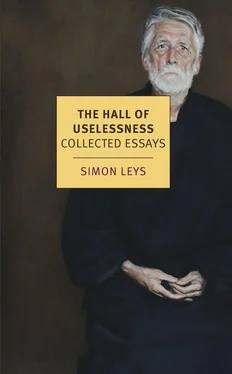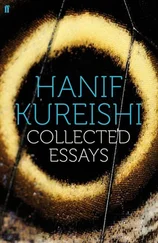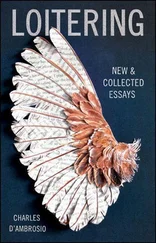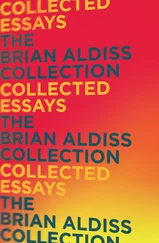* La Mer dans la littérature française , Vol. 1 de François Rabelais à Alexandre Dumas, Vol. 2 de Victor Hugo à Pierre Loti (Paris: Plon, 2003).
WHAT DO you know about Magellan?
Ask this question of any educated person — a person (according to John Cowper Powys) whose culture is made of what remains after one has forgotten all one set out to learn — and you will probably receive the answer: Portuguese navigator who demonstrated that the earth is round when he achieved the first circumnavigation of the globe, in the early sixteenth century.
This answer is incomplete and partly mistaken.
First, though Magellan was indeed Portuguese, he sailed for Spain — personally commissioned by Charles V. His foreign origin provoked suspicion and resentment among his Castilian officers; some of them detested him, and their hostility was to climax in a mutiny that nearly brought the entire expedition to a premature end.
Secondly, Magellan died halfway through the voyage, killed in an absurd fight with Filipino natives whom he was recklessly attempting to teach a lesson. The circumnavigation was not achieved by him but by his lieutenant Elcano (one of his earlier enemies).
Thirdly, it had been known since the time of ancient Greece that the earth is round. A classical mathematician had even calculated — quite accurately — its circumference. A majority of the Fathers of the Church inherited this knowledge and shared it with many medieval scholars. What the expedition actually demonstrated — turning Magellan into the unwitting forefather of globalisation — was the circumnavigability of the globe: oceans all communicate; contrary to what early cartographers imagined, they are not inland seas surrounded by impassable continental walls.
Finally, the circumnavigation was improvised under the pressure of circumstances; it never was the purpose of the expedition. The original objective was quite different: it was, in fact, an attempt to find an alternative route to the spices of the East. And indeed, the royal instruction had clearly prescribed that the expedition should return by the very same way they came.
At the beginning of the Renaissance, the first great voyages of discovery were accomplished by Portuguese navigators; their daring and seamanship remained for a long time unequalled in the Western world. First, they succeeded in sailing round Africa; then they pushed further east to India, and finally they reached the Malay Peninsula. The initial impulse of these prodigious voyages had been religious and strategic: the idea was to establish a direct link between Western Christianity and the mythical Prester John, who (it was first believed) would be found in Ethiopia, and then was supposed to have settled in India. In this way, it might become possible eventually to encircle Islam. However, in the course of this elusive quest, it was very quickly realised that the venture could also generate fabulous commercial profits through the importation of spices.
Together with gold, spices constituted for several centuries the main value standard in the economic life of Europe. Pepper was sold by the grain (and it was the same in China: during the Ming dynasty, imperial civil servants were paid partly in money and partly in measures of pepper). Besides pepper, there were also cloves and nutmeg: their sole production centre was in the Moluccas; Westerners merely knew the names of these islands, but had not yet reached their shores. For a long time, Eastern spices were brought westwards by Arab traders, up to Egypt; then, from Alexandria, their distribution throughout Europe belonged to the monopoly of Venice.
Yet, once the Portuguese settled on the Malabar Coast, and then, more importantly, in Malacca, they began to deal directly with Malay coastal traders who were bringing spices from the Moluccas straight to their factories. Thus bypassing the old Arabo-Venetian monopoly, Portugal suddenly found itself in control of an inexhaustible source of riches. Spain soon wished to imitate its example. To prevent their commercial competition turning into armed conflict — which would dangerously weaken the Christian world — the two kingdoms adopted a solution originally proposed by the Pope: by treaties, the world would be divided into two halves: the eastern one belonging to Portugal and the western one to Spain. Since this agreement forbade Spanish ships using the traditional eastern sea route to the Spice Islands, the idea of trying to reach them by a westward route became increasingly attractive. In fact, this had already been the dream of Christopher Columbus: until his death (in 1506) Columbus remained convinced that he had landed in the Far East — and he believed that, had he sailed a few hundred leagues further north, he would have reached Hangzhou, the former capital of the Chinese empire!
However, by the early years of the sixteenth century, an awareness grew that between Western Europe and Eastern Asia there stood a continental barrier. The breadth of this “Terra Firma” was grossly underestimated, and its length was still unknown; also, it was soon realised that an unknown sea, the “South Sea” (Pacific Ocean), did lie on its other side: Balboa saw it after crossing on foot the Isthmus of Panama (in 1513). But how could this sea be reached by boat?
Two years after Balboa’s discovery, a Portuguese navigator followed the Brazilian coast southwards and eventually reached the vast estuary of Río de la Plata. He sailed into it, believing it was the entrance of a passage leading to the South Sea. He realised the mistake too late: local Indians killed and ate him (in 1516).
* * *
The division of the world into two hemispheres was largely theoretical: in practice, the boundary could not be drawn with precision. Unlike parallels of latitude (running horizontally) which refer to astronomical data — they can be calculated by observing the position of the sun and other celestial bodies — the meridians of longitude (running vertically) are an abstract convention: before the invention of the marine chronometer, in the second half of the eighteenth century, it was impossible for a ship to determine accurately its position.
Therefore, this global division merely translated into one vague general practice: expeditions that set sail eastwards belonged legally to the Portuguese, whereas those that sailed westwards pertained to the Spaniards. Besides this broad principle, there was also another rule: all unknown lands should belong to the country of the discoverer. In the first half of the sixteenth century, the theologians of Salamanca started to question the ethical validity of a division of the world that made no reference to natural law nor to the rights of natives. A more irrefutable objection arose in the second half of the century with the irresistible ascent of two new sea powers: England and Holland. When a Spanish ambassador demanded that England compensate the damages caused by the raids and lootings of Sir Francis Drake, Queen Elizabeth replied:
The South Sea like all other oceans is common property of all mankind. The awarding by the Bishop of Rome of a country that does not belong to him is a fantasy. Spaniards have no more rights than any others over what they themselves usurped, and no one owns a country simply because he erected some huts there, or gave the name of some saint to a cape or to a river.
Still, let us not anticipate. In Magellan’s time, things had not yet reached this point, and when the navigator presented to Charles V his idea that there must be somewhere in the southern parts of Terra Firma a passage leading directly to the Spice Islands, the great monarch grasped at once the extraordinary benefit which Spain might draw from such a discovery: the possibility of securing a legitimate short-cut to the source of Portugal’s prosperity. Earlier on, Magellan had vainly tried to get the Portuguese court interested in his project. Now this same court realised too late that such an expedition, under the Castilian flag, was going to endanger its own eastern trade. Eventually, the Portuguese navy attempted to obstruct the progress of Magellan’s ships, with only limited success.
Читать дальше












